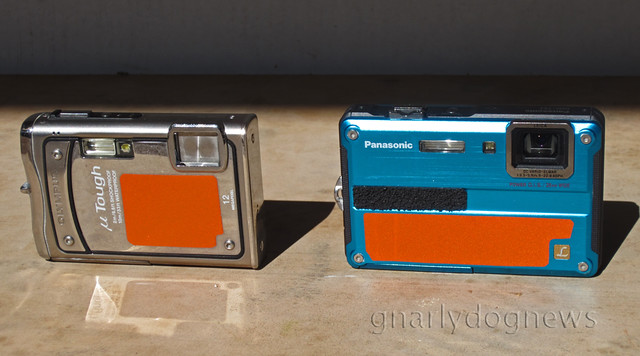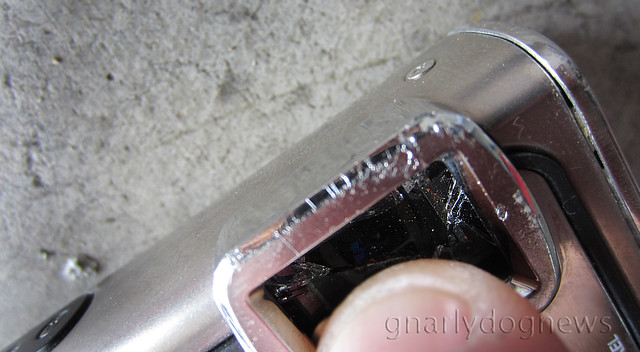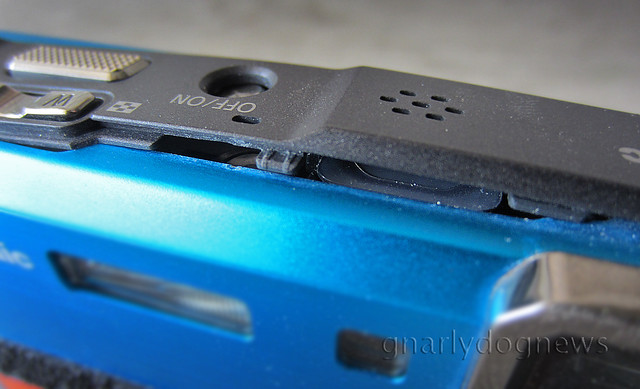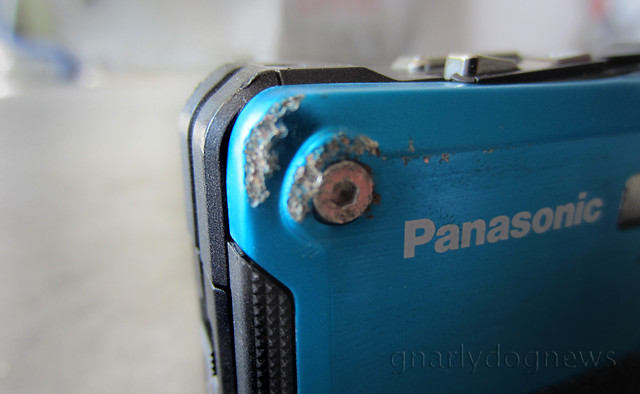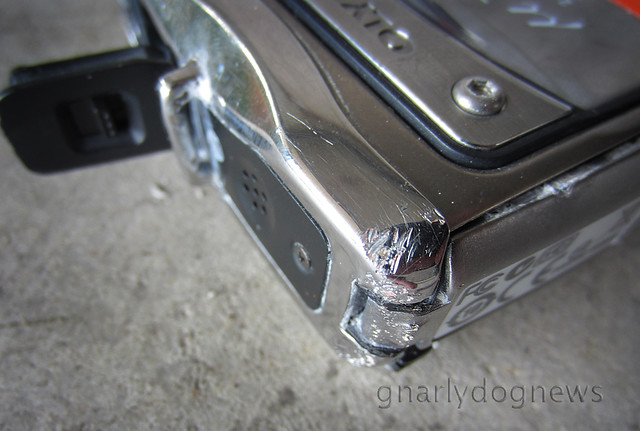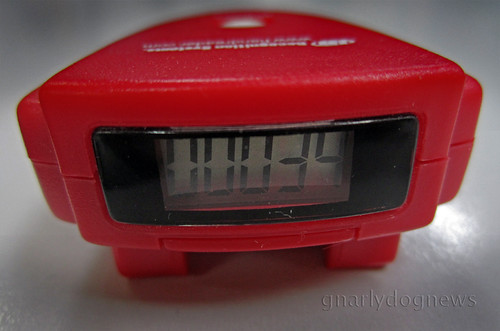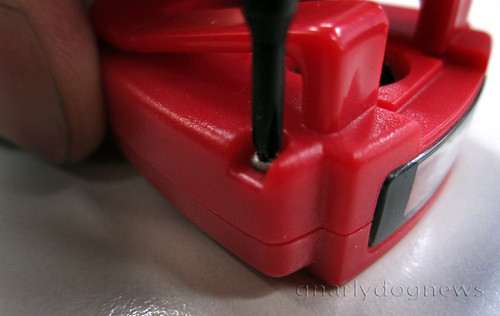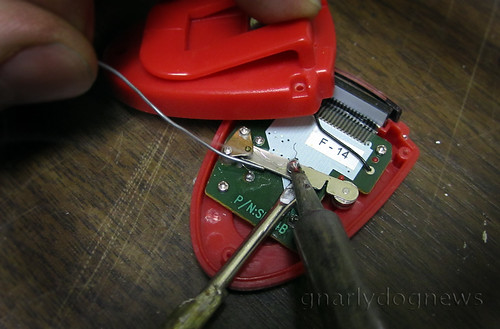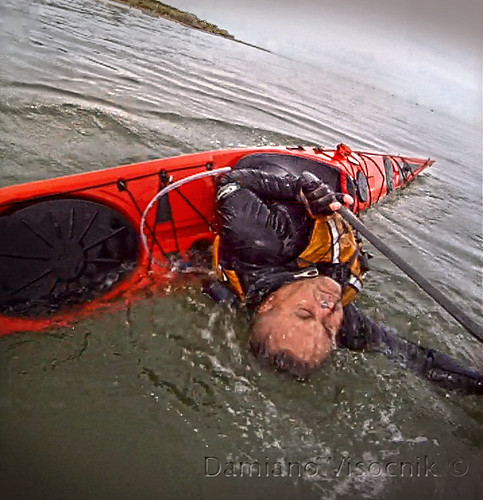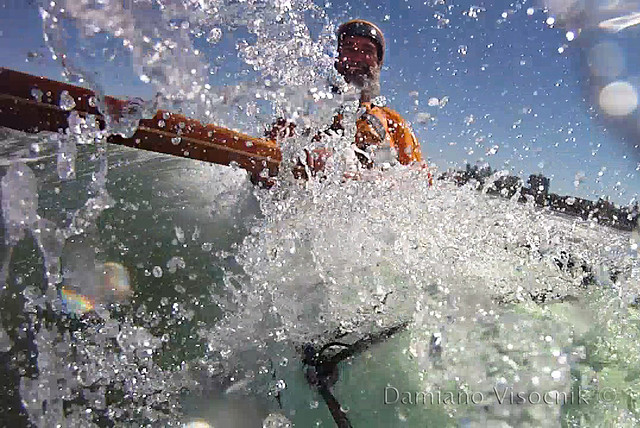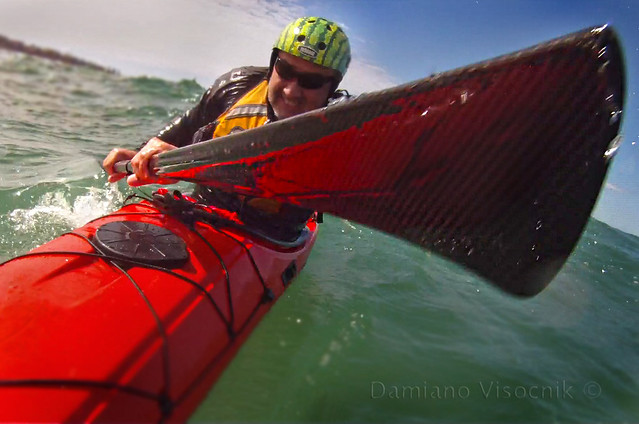I have noticed an increase in popularity of the single-mast sails for sea kayaking. I find the forward (of the hatch) mounted sail to be the easiest and most efficient sail to use while paddling.
I never liked the twin mast one and even less the step mast ones where the sail would interfere with my paddling stroke.
I believe that a collapsible mast is a safe sail too, taking only a split second to depower when the wind suddenly becomes just too strong to sail.
I currently use
Flat Earth Sails and while they are more efficient than similar style sails (lateen) they require thoughtful mounting.
I have seen and read about sails that have failed when the breeze picked up above 15 knots; surprisingly those failures could have been avoided if the sailor would have set them up correctly.
A single mast sail should be kept as vertical as possible when sailing since tilting the kayak away from the breeze usually spills the wind and slows the boat down.
While often unavoidable, a paddler should counteract the heeling of the kayak to maintain proper balance and forward momentum.
When I set up a sail on my kayaks I take a fair amount of time to create the perfect-length stays. I secure high quality line (always Dyneema) to a
very solid anchor on deck.
My anchors are spaced widely apart
on the edge of the kayak's deck. Using existing deck fitting for anchors only works if they are in the right spot.Early experimentation demonstrated that stays too
close to the base will not keep the mast upright.
Proper length stays are a critical component to successful sailing.
As unsolicited advice can be met with contempt, I often refrain from commenting (on the spot) when I see a set up destined to fail.
I have witnessed stays attached to the kayak's perimeter lines because the owner didn't want/care to create proper anchors for the stays.
When perimeter lines do stretch under the strain of the wind the mast would then often collapse.
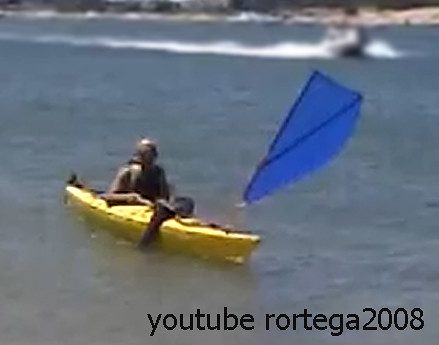 not so good set up
not so good set up
Needless to say the paddler would then blame the sail manufacturer and tout that his sails are rubbish.
So how do you set up the sail to keep up in strong winds?
I mentioned Dyneema line, in my opinion the crucial part. Nylon stretches when wet and elongates under load.
Secondly I make sure that the stays are just a bit on the short side. When the wind loads the sail the polymer mast joiner (base) deforms a bit and compresses. A stay that is a bit too long would then angle the mast precariously.
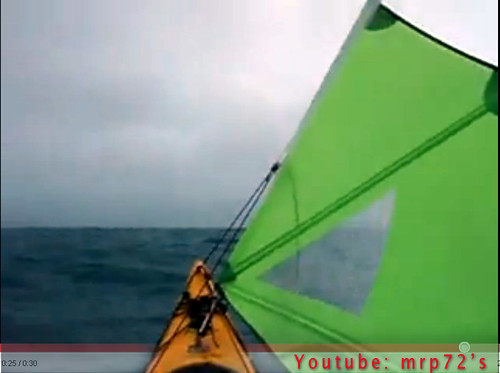 sail about to collapse
sail about to collapse
Lastly I make sure that the deck of my kayaks don't flex under the base of the mast.
Most kayaks' decks are not designed to take a concentrated load in one spot. Peaked decks are better but often still not strong enough.
Since I don't like creating metal plates externally under the mast's base, I prefer to reinforce the deck of the kayak internally. A few layers of quality fibreglass cloth (even carbon, if I have any scraps laying around) make a much neater set up than agricultural looking metal plates, in my opinion, and lighter.
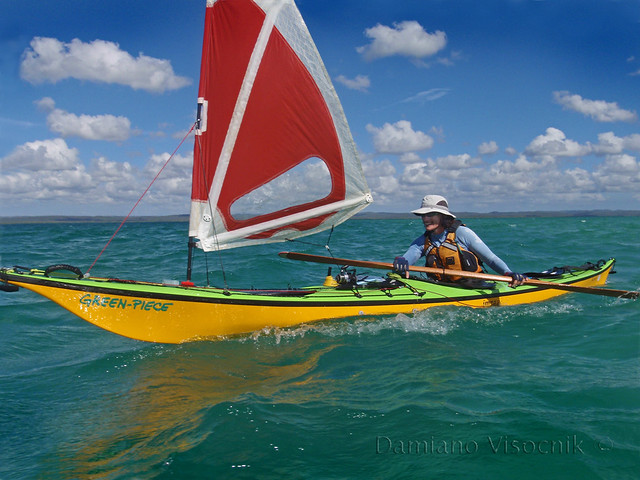 sail set up with mast in upright position
sail set up with mast in upright position
I use quality cleats that keep the uphaul line in position. I hate nylon cleats that let the rope slip.
A tensioned uphaul will keep the mast upright.
And finally the fasteners that keep the stays attached to the deck anchors.
I don't use snap links and even less
clasps.
Nothing is more solid, secure and unobtrusive than a proper small
"D" shackle.
It might take a second longer to secure it but I am positively sure it won't let go.
So, if your sail set up has failed you consider checking the above pointers.
If any other cause is not keeping your sail upright I might be able to advise you on a solution.
JUL 2012: updates on sail set up here
.
